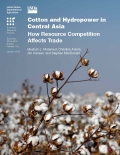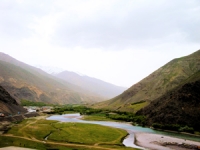Water sharing between Central Asian countries has been conflicting for quite a long time already.
Cotton and Hydropower in Central Asia: How Resource Competition Affects Trade
As growing populations demand more electric power and the need for low-emission energy sources intensifies, interest has risen in hydroelectric power (hydropower) as an alternative to carbon-based sources. However, hydropower’s demand for water resources is pushing up against the needs of agricultural irrigation. Hydropower is a feasible energy source only in certain regions of the world, and it accounts for only about 2 percent of the world’s energy supply. But its interaction with irrigated agriculture—for instance, through competition for water or resource-sharing agreements—can generate large effects, from local to international. In this report, we approach the topic of water competition between the energy and agriculture sectors from a global perspective. To show why this perspective should matter to policy makers, we present a case study of cotton production in Central Asia in which we combine high-resolution geographic information system (GIS) data covering crops and river basins with a partial equilibrium agricultural trade model to simulate the international trade effects of different water policy scenarios.





